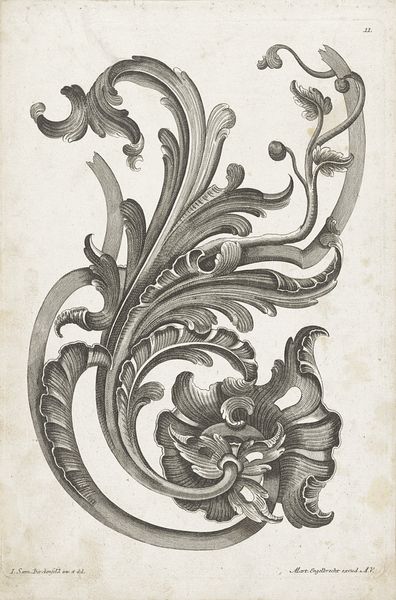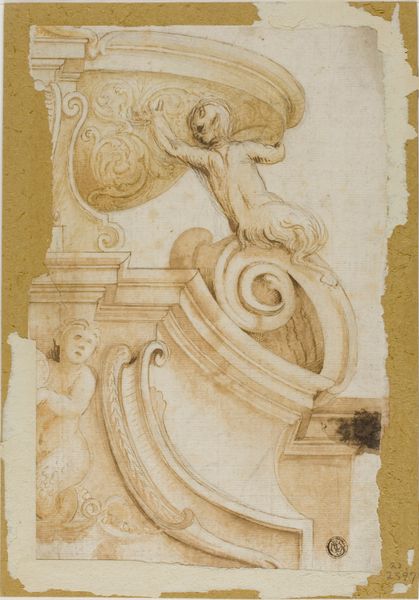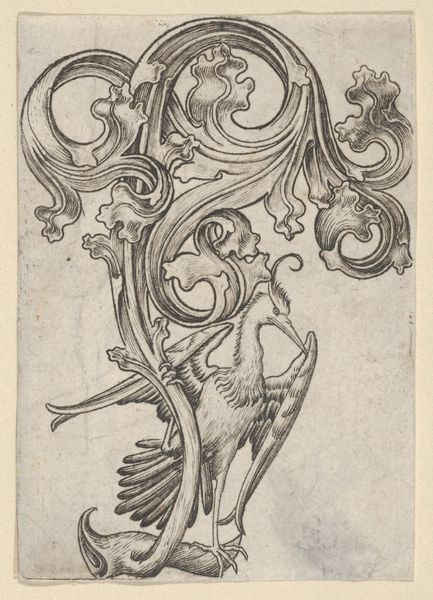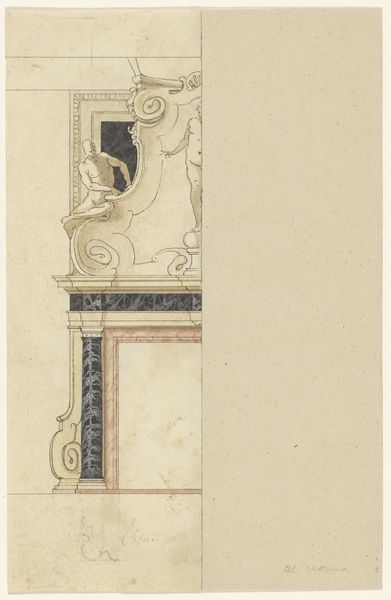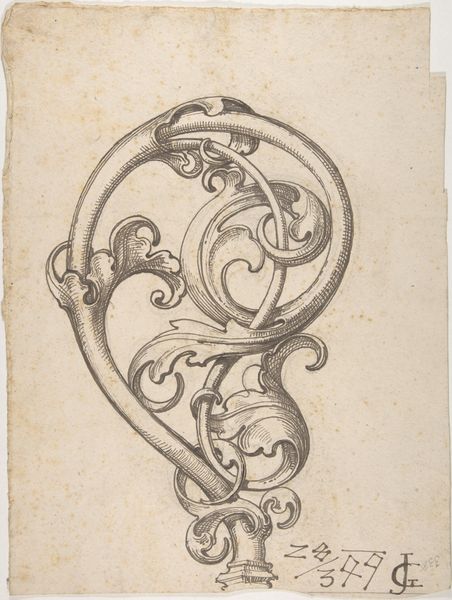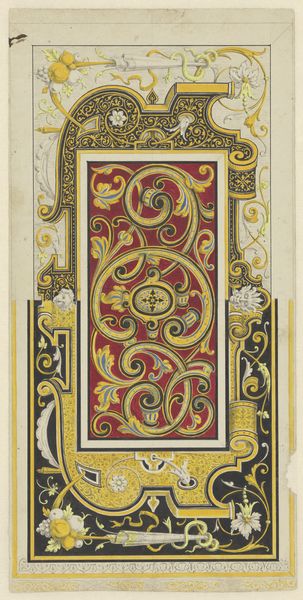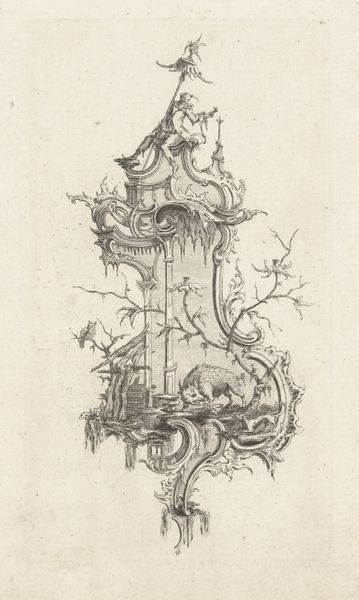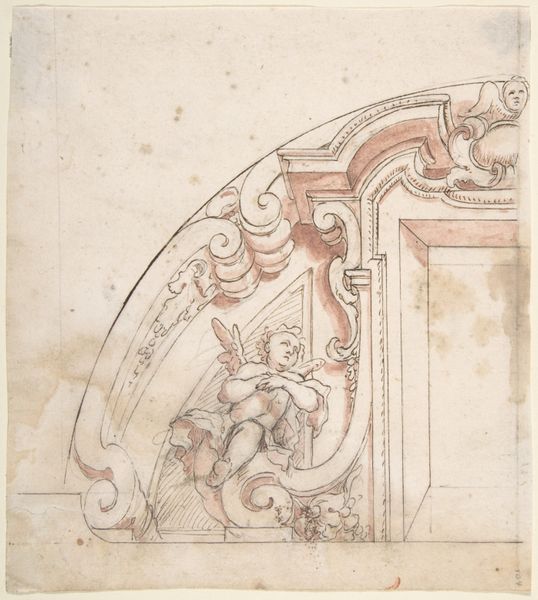
Fragmenten karton voor het glasraam in de westgevel van Joris van Egmond (Bisschop van Utrecht 1535-1559) voor de Sint Bavo Kerk te Haarlem 1541
0:00
0:00
drawing, coloured-pencil, paper, ink
#
drawing
#
coloured-pencil
#
mannerism
#
paper
#
form
#
11_renaissance
#
ink
#
linocut print
#
coloured pencil
#
line
#
watercolor
Dimensions: height 12035 mm, width 580 mm, height 3710 mm, height 76 cm, width 27 cm, depth 27 cm
Copyright: Rijks Museum: Open Domain
Editor: Here we have Gerrit Boels' "Fragmenten karton voor het glasraam in de westgevel van Joris van Egmond (Bisschop van Utrecht 1535-1559) voor de Sint Bavo Kerk te Haarlem," created around 1541. It's a detailed drawing with ink and colored pencil on paper. The ornamentation and detail feels almost overwhelming to the eye. How do you unpack something like this? Curator: This is a fascinating piece to consider within its historical context. As a preparatory drawing, or cartoon, for a stained glass window in a significant church, it reveals a lot about the artistic process and the socio-political climate of the time. Mannerism, as we see here, often thrived under the patronage of powerful figures, like bishops. Does the drawing tell you anything about how sacred spaces functioned in the lives of the elite? Editor: That’s a great question. I see all the embellishments as signs of wealth and power, literally elevating the status of both the Church and Bishop van Egmond through art. The detail must have been stunning in stained glass. Curator: Exactly. Consider the Reformation brewing during this period. The Catholic Church, facing challenges to its authority, employed art as a powerful tool for reaffirming its dominance and captivating the faithful. Stained glass, in particular, bathed sacred spaces in divine light, reinforcing the church's otherworldly power. This drawing becomes evidence of that effort, wouldn’t you agree? Editor: I do. Thinking about the Reformation adds a new layer to my understanding of the art. It’s not just decoration; it’s a statement. So, this wasn't just art for art's sake? Curator: Precisely. Art rarely exists in a vacuum. Patronage, religious upheaval, social dynamics - these are all threads woven into the creation and reception of artwork like this. Seeing the work's function helps a lot. Editor: I see this piece differently now. Thinking about how art served the church's agenda makes me see it less as mere ornament and more as a powerful visual argument. Curator: Absolutely. And remembering these nuances can enrich our understanding of any piece of art.
Comments
No comments
Be the first to comment and join the conversation on the ultimate creative platform.



